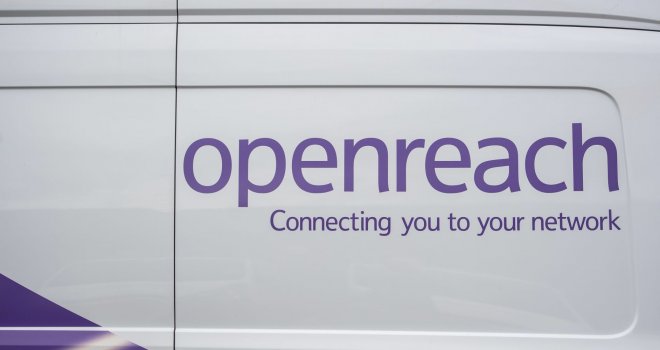Driving Transformation By Building The Future Of Connected Work

As we emerge from another extraordinary year, businesses everywhere are considering the challenges and opportunities that lie ahead. Cameron van Orman is the Chief Strategy and Marketing Officer at Planview, the global technology vendor that delivers portfolio and work management solutions for 2.4 million users worldwide. So, his ear is firmly to the ground when it comes to understanding the headline pain points every business is thinking about.
PM Today’s Associate Editor, Amy Hatton, recently spoke to Cameron about the future of work, and how connected work can transform the evolution of the enterprise – even in the most turbulent of times.
I’m talking to Cameron on the now obligatory zoom call. His background, quite rightly, reflects Planview’s new mission statement, ‘Building the Future of Connected Work’. It is a mission that he is clearly proud of. And it emerges from a year of strategy planning, closely informed by the conversations Planview has with customers daily.
“Effectively, the headlines we’re hearing cover two broad dimensions,” he explains. “From a business perspective, companies are racing to stay ahead of today’s pace of change. Industries are changing with increasing velocity and speed. Life cycles are shorter. Planning, by necessity, is becoming more iterative and rapid because consumer expectations are changing so fast.”
The other side of the coin, Cameron continues, is the human factor. “The dynamic of the workforce is changing, but so is the motivation. There is a real sense of people and teams wanting to be part of a purpose-driven enterprise – one with mission and soul. We’re seeing a genuine desire to be connected to whatever the company is trying to achieve. But that becomes more complex in the context that objectives are likely to change rapidly as market conditions pivot. So, we’re seeing two separate, significant dynamics, but they’re closely related to each other.”
This view certainly aligns with broader research. Gen Z now accounts for one third of the world’s population, and so is set to shape the face of the workplace moving forwards. A recent report by Deloitte portrays the defining characteristics of this incoming workforce. It is one that prizes interest and motivation over salary, expects employers to commit to wider societal issues, and regards technology as the ultimate enabler. Similarly, Cameron’s own passion about technology’s role is clear.
“Planview has an unflinching vision of the future of connected work. It’s a journey that we, as a company, are travelling alongside our customers. We have undergone enormous change and growth in the past couple of years. It gives us a lot of insight into what our customers are facing every day.
“Our mission starts with our belief that the strength of an enterprise depends on the connections between its component parts. Teams connect to plans, ideas connect to impact, opportunities connect to value, and there are so many other complex connections and relationships across multiple vectors. For me, it’s incredibly rewarding to see how our own evolving strategy and the products that emerge from that are driving impact for our customers.”
So, what does connecting work really mean? “It’s no longer about just cascading directives from the top down,” Cameron explains. “There is that hierarchical relationship, of course, between the C-Suite, the PMO and the workforce. But the connection needs to be a two-way dialogue, not a directive. That’s so important now. If the top decides to pivot because of a changing market condition, you have to make sure the whole organisation makes that pivot together. Then, we have horizontal connectivity – by which I mean connecting across functions, breaking down silos.
“This comes back to the human dimension we discussed. How do you enable people and teams to connect across departments, functions, and value streams? In today’s hybrid working world, how do we connect across different physical locations? Across different methodologies? Even more challenging, how do we connect an idea to an impact? How do we connect an opportunity to a business outcome? It is a multi-faceted concept – not a linear one.”
Does the answer to these questions, I wonder, lie in a fairly broadly accepted view that ‘we are all project managers now?’ Cameron feels the concept goes further. “I would reframe the statement to say, ‘we are all business people’. As professionals, we are all thinking about outcomes and impact. And because of that, we are looking for cultures of enablement, rather than the old ‘computer says no’ style of management. Absolutely, processes and methodologies are important. But the reality is that most companies aren’t wall-to-wall Agile or wall to wall Waterfall. What’s important is being pragmatic about the best way to deliver the right outcome. Overarching that is the way in which governance has to adapt at speed. For the top to make the right calls, they need information from the teams who are closest to the work – and often closest to the market and closest to the customers as well.
“Those teams are at the sharp end of where the next risk or opportunity is coming from. Market changes, customer changes, technology changes…all of these factors need to be surfaced with data and elevated so that the top can make better decisions. But then, the executive needs to push vision, context, and information down, empowering team members to make business-critical local decisions at speed. For a C-Suite Executive, nothing is more terrifying than going to the mountain top, looking at all the signals you’re seeing, making the best decision you can, and then wondering…does anyone else know about it? Are our people connected, right now, to what matters most to the company, and why it matters?
“Technology is a key enabler – and that technology is already here. It’s ready to help us meet these challenges. AI, machine learning, mathematical models, algorithms, they all can equip us to serve up the data in such a way that it allows us to visualise, strategize, communicate, evolve the enterprise and adapt to the unexpected.”
Here comes the question that I always feel is most important for our readers: from a PMO’s perspective, how do we actually do all of this? Cameron has some practical advice to share. “First, understand and anchor to the business strategy. If you’re not in those conversations now, take action to get involved in them.
“Second, plan and replan – and embrace that iterative process with enthusiasm! It’s so important for your business right now and moving forward. Third, understand delivery risk and provide that visibility early and often. Don’t underestimate your role here as a PMO. I have seen PMOs use our software to prevent their sponsors from making potentially disastrous business decisions, by providing fast visibility over factors the sponsor didn’t fully understand. In a situation like that, it is the skill, knowledge, and intelligent judgement of the PMO that enables them to spot the risk.
“But it is the technology that enables them to illustrate that risk in a meaningful and accessible way. Finally, four, think about the external customer and the impact you can have on the company’s P&L by understanding that customer and their needs. You, as a PMO, are ideally positioned to leverage your skills and knowledge to have a bigger impact than you ever might have imagined.”
More resources:
Find out more about managing transformation with Planview
Read this case study on how Santander has unlocked business agility across the enterprise
Visit the Planview blog for an Insider’s Guide to Modern PPM




